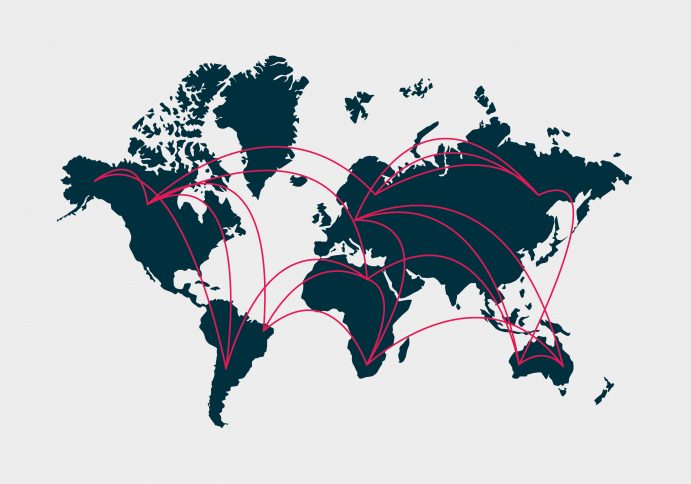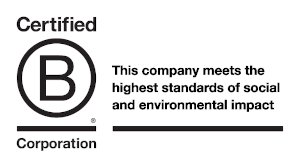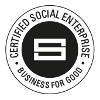It’s relatively easy for companies to understand and manage their direct environmental impacts, for example through energy or water bills. But for many companies there are often much greater, hidden impacts associated with the procurement of goods and services from global supply chains, which are much more difficult to identify and tackle. This is particularly the case if you are a manufacturer, retailer, or a construction client, developer or contractor.
Managing these ‘indirect’ or ‘scope 3’ impacts through sustainable procurement and supply chain management are key components of responsible business practice. It also makes business sense. It can help to save money, reduce carbon and other environmental impacts, manage risks, improve competitiveness and build a business’ reputation. So the question is not whether you should do it or not, but how do you do it successfully?
For me, there are two strands to this. Firstly, establishing and implementing a robust corporate-level sustainable procurement strategy, and secondly, applying sustainability principles when buying specific products. It is about procuring sustainably, and procuring sustainable things; how and what. Companies need to do both to manage their impacts and improve sustainability performance.
Corporate-level strategy
The key elements of developing and implementing a robust corporate-level sustainable procurement strategy are:
- Vision and clear objectives – what are you aiming for? Which sustainability principles and standards are you putting in place for procurement?
- Leadership and governance – the strategy needs to be endorsed from the top, and governance processes to implement it need to be put in place. A shift in organisational culture may be required to change the emphasis from buying low cost items, to considering whole life economic, environmental and social factors.
- Communication – both internal and external communication will be key enablers for your sustainable procurement strategy
- Training – different departments will have different training needs. What type of training will be delivered, how frequently?
- Risk & opportunity identification and management – where are your biggest areas of spend? Where are your biggest risks and opportunities? Expenditure analysis and supply chain mapping are key tools to help strategically identify and manage the most significant issues and opportunities for your business.
- Embedding sustainability into the procurement process – is a process in place to challenge purchase requests and the “business need”? Is adequate weighting given to sustainability in the sourcing strategy? Are appropriate and challenging sustainability requirements embedded into specifications, tender questions and contracts?
- Embedding sustainability into supplier management processes – do you know how well your suppliers are performing in sustainability terms? What opportunities are there to improve?
- Supply chain engagement and collaboration – sustainable procurement involves a higher degree of engagement and collaboration between all parties in a supply chain. This should take place pre-contract, and throughout delivery of the product or service. End of life/reuse/recycling companies should also be engaged.
- Measurement, reporting and continual improvement – have you got systems in place to monitor progress and continually improve?
As with any change management programme, companies will need to gain “buy-in” from employees across the business, drive through implementation, and regularly evaluate and improve their approach. In the case of sustainable procurement, a strong collaborative effort between the Procurement department, Sustainability department and people buying things across the business is essential. Specialist consultants can help set up and implement a bespoke and effective strategy following industry frameworks like BS 8903 and the DEFRA Flexible Framework.
Product-level specification and procurement
Each product or service has different life cycle environmental and social impacts associated with it; some may contain hazardous materials, some might be water intensive to manufacture, some might be manufactured in locations with questionable ethical practices, some might have high transport impacts, some might have high energy consumption in use, some might be non-recyclable and end up in landfill. Some of the issues are illustrated in the figure below.
The challenge for businesses is to mitigate life cycle impacts (from material sourcing, manufacture, distribution, installation/construction, use and end-of-life) at the specification and procurement stage. Some suppliers may have an independent Life Cycle Assessment (LCA) or Environmental Product Declaration (EPD), which help buyers make informed decisions, but many suppliers don’t. Buying organisations are faced with unsubstantiated environmental claims and, oftentimes, greenwash. This makes procuring sustainable products all the more difficult!
Clients need to make sure they have a sustainability team, or access to sustainability consultants, who can provide input into product-level procurement; assessing market capability and best practice, writing specifications, and evaluating solutions and data provided by suppliers during the procurement process.
Doing it successfully
Many companies get stuck developing a sustainable supply chain strategy that is fit for purpose; others have trouble implementing their strategy in practice. With a constantly evolving sustainability field, keeping up with the times and continually improving requires dedicated effort. As the old saying goes, it’s a means to an end, not an end in itself.
Moving up the sustainable procurement maturity curve and “doing” sustainable procurement really successfully does take time and effort, but it is well worth focusing on. The initial investment in a corporate strategy and product-level action will be quickly offset by resource efficiency savings, better whole life value for money, bringing about innovation and gaining a competitive advantage, developing new and better relationships with other like-minded responsible companies, managing risks and upholding your reputation.
We have helped a number of major clients with their approach and will be updating our project pages very soon… watch this space.





